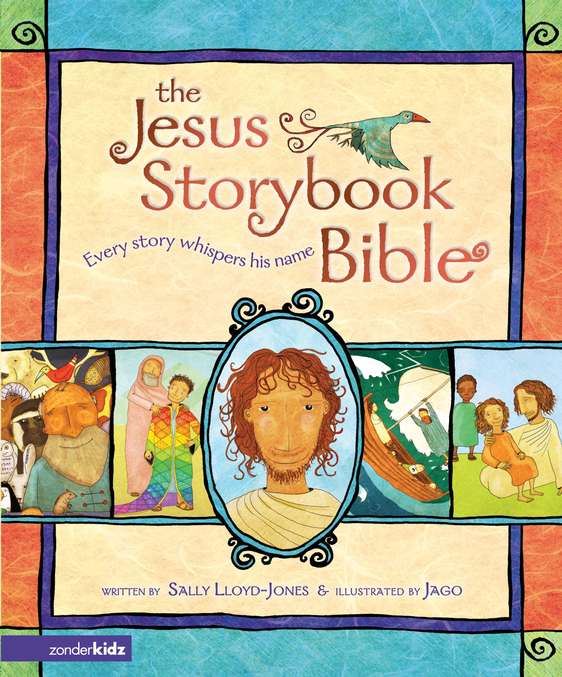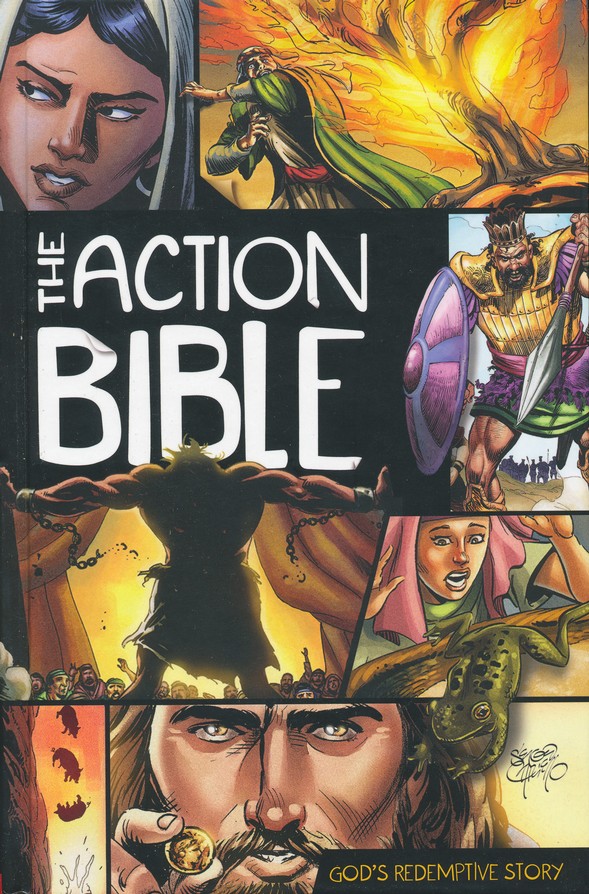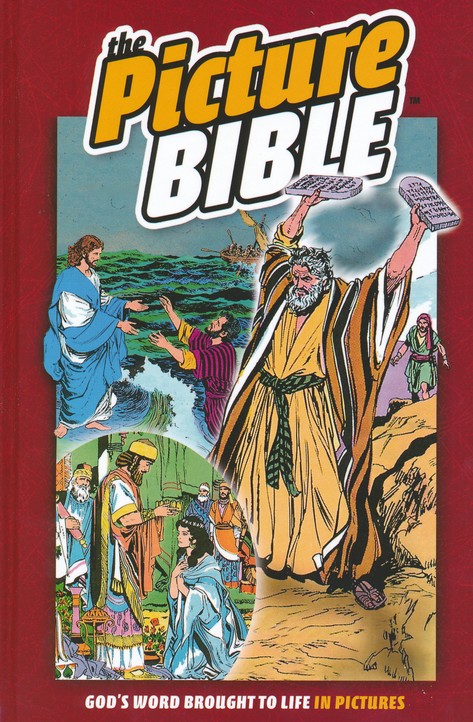Want to know the very best Bible for your kid?
It's the one they'll read.
Seriously - that's the goal. That's the cardinal rule of Bible buying. The Bible your kid is drawn to, devours, dog-ears, marks up, can't wait to read - that's the one they need to have.
Which one that will be is a harder question, and you'll only know by exposing kids to lots of different ones. I'll make some suggestions at the end of this post, but a trip to a Christian bookstore with your kid is time well-spent. Better to buy them the one they pick out than surprise them with one that ends up sitting on the shelf.
Keeping in mind cardinal rule #1, here are a couple of other guidelines:
1. Don't judge the book by its cover. I can't tell you how many flashy, cool-looking covers I've seen, for every kind of kid imaginable - rough & tumble, brainy, girly-girl, athletic, adventurous - yet you open them up and it's no different a Bible than you'd find in a typical adult church. Which doesn't make it a bad choice, but if your kid would be unlikely to read the adult Bible from church, will a cool cover make them more likely to read a similar Bible at home? It might, but consider that carefully. Bible publishers design "kid Bibles" this way because their job is to sell Bibles, and there's nothing wrong with that, but putting neat-o packaging around it and slapping the words "Kid's Bible" or "for Kids" doesn't transform it into something that will be easily understood nor readily consumed by kids. And remember, that's the goal. The goal isn't just that they have a Bible they'll proudly claim and carry around, but that they'll use that Bible. Readability plays a big role in that. Which lead us to...
2. Pay attention to translations. The NIV, which is the preferred translation in many evangelical churches, has a 7th-grade reading level. In other words, someone who has completed 7th grade should be able to read and understand it. The King James Version? 12th grade (but, the New King James, 7th). The English Standard Version is at a 10th grade reading level, while the New Living Translation registers at a 6th grade reading level. (See more here.)
Why they wouldn't make all Bibles as easy to read as possible comes down to translation philosophy: are you trying to reproduce the words from the Greek and Hebrew, even if the reading comes out difficult and stilted, or are you trying to reproduce the ideas, even if that means you employ sentence construction and phrases that are easily understood, but not "literally" a translation of the manuscript? (Here's what John 3:16 looks like when Greek words are translated directly to English, with no regard for what makes "good" English: "Thus for loved God the world that the son the only-begotten he gave (so) that all believing in him not might perish but might have life eternal.") Naturally, because of cardinal rule #1 - the best Bible is the one your kid will read - I'm in favor of the second approach when it comes to Bibles for kids, because if they're confused and find the reading too difficult, they won't read it, and then what have you gained?
The "easiest" translations to read are the New International Reader's Version (NIrV), the New Century Version (NCV), and Contemporary English Version (CEV), all at a 3rd grade reading level. To get any simpler than that, you have to resort to translations-of-translations (the NIrV is one), which take English translations and make them even simpler. Many of these were developed for non-native English speakers. Which leads us to...
3. Bibles vs. Bible story books. Many kids' Bibles are in fact compilations of important Bible stories. Or more accurately - compilations of the accounts of important events that are recorded in the Bible. That's one weakness of Bible "storybooks", that they could give kids the impression that the Bible contains "stories" (that is, fiction). But that's easily overcome, by repeatedly emphasizing to kids that these are true stories involving people who really lived.
Another drawback is that while the stories are arranged chronologically, there's a jarring lack of continuity. Jesus might immediately follow after Daniel, despite the 600 years between them. But young kids have trouble conceptualizing vast amounts of time anyhow, and even an adult Bible omits hundreds of years - the Bible is not an comprehensive history of the human race.
Clearly, very young children will use storybook Bibles. But if you're anxious that your older child still hasn't "graduated" to a full, 66-book, chapter-and-verse Bible - don't be. Refer back to cardinal rule #1: the best Bible is the one your kid will read. The message of the Bible is what transforms us; not the particular words. When you read an English Bible, you're not getting the words, but an interpretation, communicating the meaning in the Greek and Hebrew.
And by the same token, don't stress out over Bible mechanics. Kids learn about the Bible's layout and how to navigate it as a byproduct of actually reading it. Find the one they love to read, and the rest will follow. Which leads us to...
4. Set a good example. This article stresses that a love of reading cannot be imposed on kids, but it may be contagious. Kids who read books tend to have parents who love to read. Likewise, if kids see us reading - and enjoying reading - the Bible, they might come to value it as well.
And I beg you: don't pay your kid to read the Bible. Let them develop it because it excites their imagination, satisfies their curiosity, and fills their soul. Rewards cheapen what the Bible is all about.
If you're a little lost when it comes to reading the Bible, we have a great class for you and your kid to take together once they've reached 4th grade. What's The Story? and What's This Book? are designed to promote Bible literacy and make you a good Bible reader. Look for their re-launch this spring once the new chapel opens.
A Couple of Recommendations

The Jesus Storybook Bible: Every Story Whispers His Name This awesome little innovation manages to weave Jesus into every selected Old Testament and New Testament story, so that while you may be learning about Noah, you're also learning about his connection to the savior who was to come. I haven't heard from any family yet that hasn't loved this Bible.

The Action Bible Kids have been fascinated with this one for a few years now. Full-color, impressive drawings, laid out comic book style, and again with a focus on the "big picture" story of the Bible and God's hand in sovereignly saving his people.
The Picture Bible is what the name suggests. It's very similar to the Action Bible in that it selects several characters and relates events from the life of each one, but the illustrations aren't as striking.

If you want a full-text, "regular" Bible, just take your kid online or to a Christian bookstore and have them choose the cover style that suits them. Unfortunately, the easier the reading level, the fewer the choices you'll have - most "kids' Bibles" tend to be NIV.
